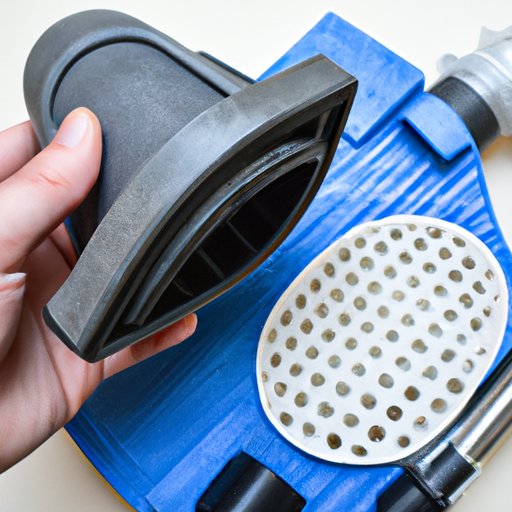Introduction
A vacuum cleaner is a great tool for keeping your home clean and tidy. However, when your vacuum starts emitting an unpleasant smell, it can be a sign of an underlying issue that needs to be addressed. In this article, we’ll explore the potential causes of a smelly vacuum and provide actionable steps to help you identify the source and take corrective measures.
Identifying the Source of the Smell
Before taking any action, it’s important to first determine whether the smell is normal or abnormal. If you’ve just purchased a new vacuum, there may be a chemical odor coming from the motor or other newly manufactured components. This smell should dissipate after a few days of use. On the other hand, if the smell is persistent and unpleasant, it could be a sign of an underlying issue that needs to be addressed.
Once you’ve determined the smell is abnormal, it’s time to start troubleshooting potential causes. The most common culprits are a clogged filter, debris buildup, worn vacuum bags or filters, and improper use of attachments. Let’s take a look at each of these in greater detail.

Cleaning Out the Vacuum Filter
If your vacuum has an air filter, it’s likely the source of the smell. Over time, the filter can become clogged with dust and debris and start to emit an unpleasant odor. To clean the filter, start by removing it from the vacuum. Depending on the model, this may require unscrewing the housing or simply pressing a button. Once the filter is removed, tap it against a hard surface to dislodge any debris. Then, use a soft brush to gently remove any remaining dust and dirt. Finally, replace the filter and make sure it is securely fastened before using the vacuum again.
Properly Disposing of Debris
Another common cause of a smelly vacuum is the buildup of debris in the canister or dustbin. If you haven’t emptied the canister in a while, it’s likely the source of the smell. To remedy this, empty the canister or dustbin and discard the contents in an appropriate container. If possible, it’s also a good idea to rinse out the canister or dustbin with warm, soapy water to remove any residue.

Replacing Vacuum Bags or Filters
If your vacuum uses bags or filters, they will need to be replaced periodically. Over time, the bags and filters can become clogged or worn, leading to poor suction and an unpleasant smell. It’s a good idea to check the manufacturer’s instructions for the recommended replacement schedule. When selecting a new bag or filter, make sure to choose one that is compatible with your make and model of vacuum.
Using Proper Vacuum Attachments
Vacuums come with a variety of attachments designed to clean hard-to-reach places. However, some of these attachments can trap debris and cause a foul smell. To avoid this, take the time to familiarize yourself with the different types of attachments and how to properly use them. Also, make sure to empty the canister or dustbin after using any attachments to prevent the buildup of debris.

Keeping Your Vacuum Clean and Well Maintained
In addition to addressing the potential causes of a smelly vacuum, it’s also important to keep your vacuum clean and well maintained. Check for signs of wear and tear, such as fraying cords or loose screws, and take the time to regularly clean and store the vacuum. Following these simple steps can help ensure your vacuum is always running at peak performance.
Conclusion
A smelly vacuum can be a sign of an underlying issue that needs to be addressed. By following the steps outlined in this article, you can identify the source of the smell and take corrective measures. These include cleaning out the vacuum filter, properly disposing of debris, replacing vacuum bags or filters, using proper vacuum attachments, and keeping your vacuum clean and well maintained. Doing so can help ensure your vacuum is always running at peak performance.


